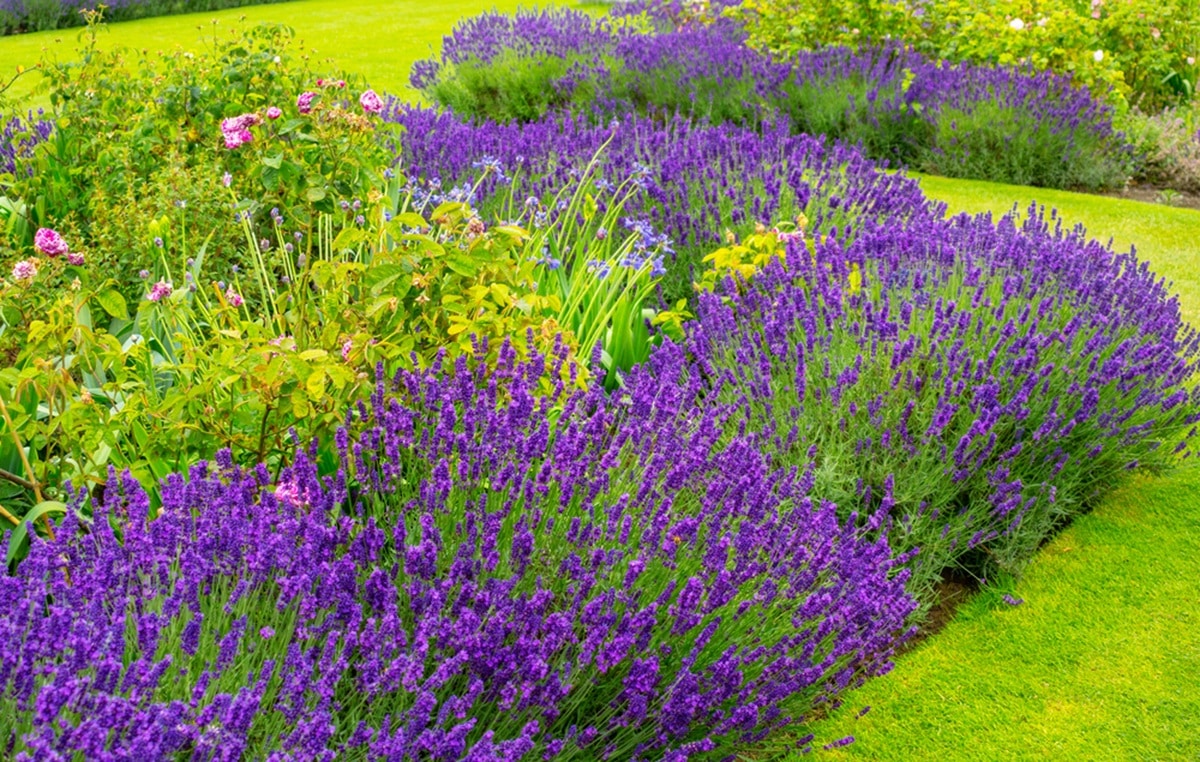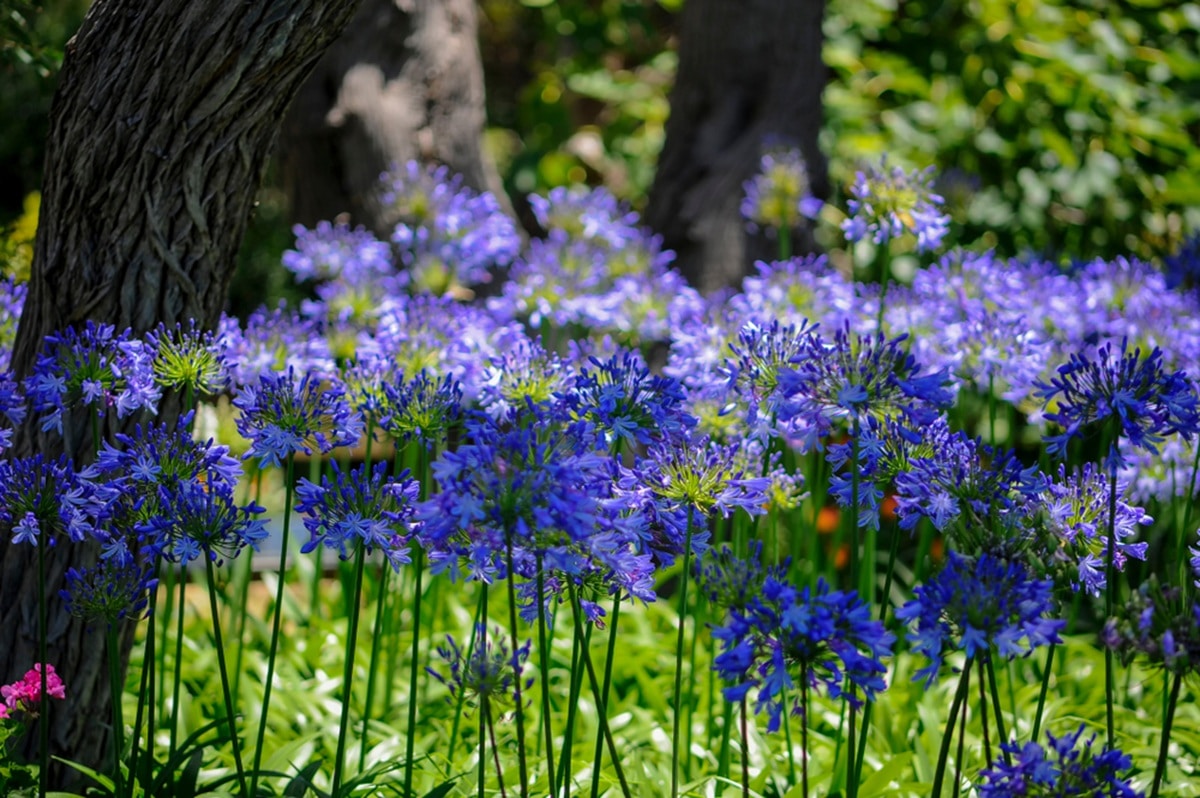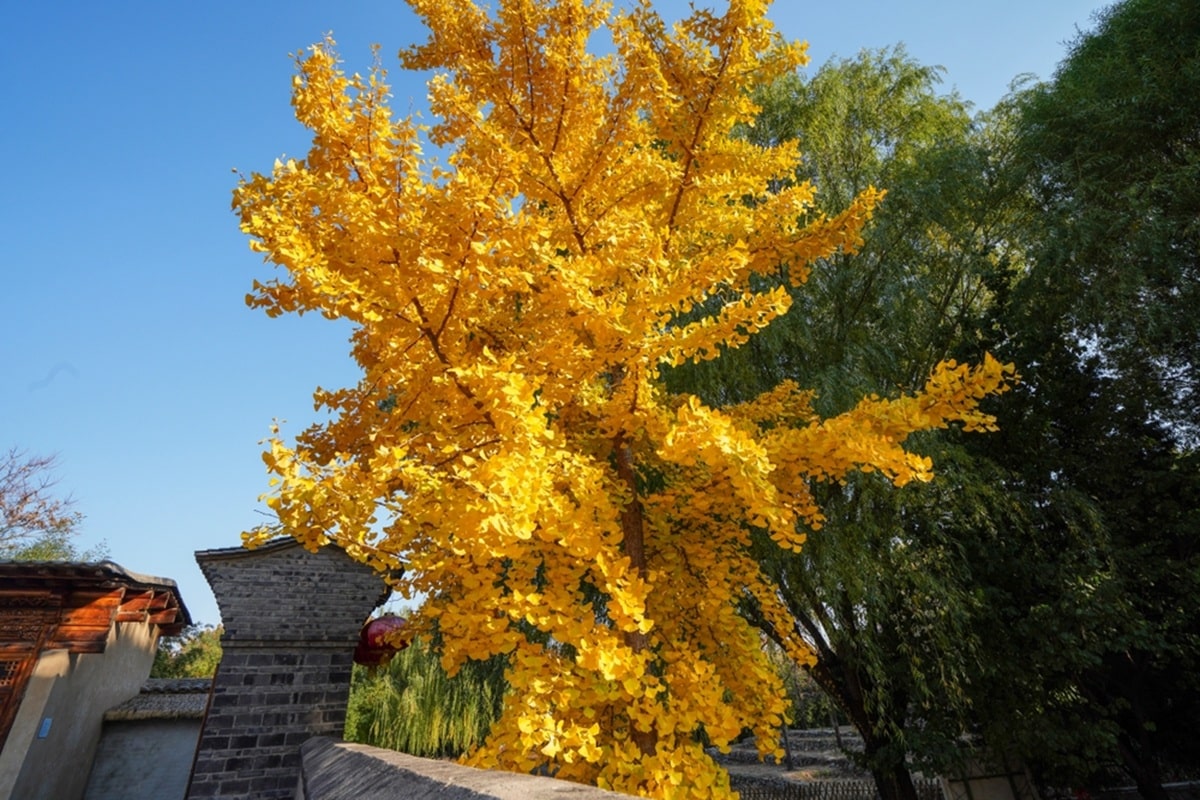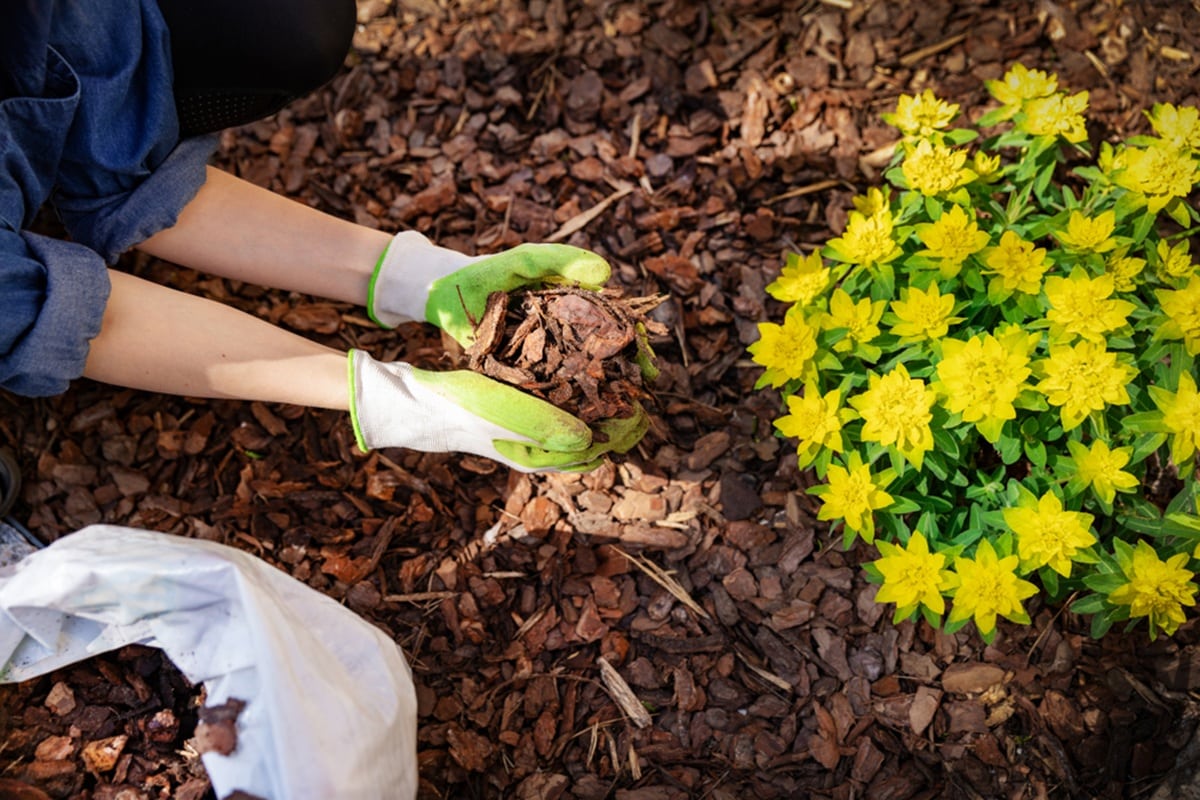
With hotter summers, more erratic storms and shifting seasons, the plants that thrived in our gardens a generation ago may struggle by 2050. However, by making careful design changes, smarter plant choices and simple soil and water management, gardens can become far more resilient to climate change while still looking beautiful.
In this article, we look at the reasons behind our changing weather patterns; what horticultural experts are recommending and highlight gardens already experimenting with a new approach. We also list ten plants likely to cope well in UK conditions by 2050 and give practical gardening tips to counter our changing climate.
What is causing climate change?
Since the Industrial Revolution began, the amount of carbon dioxide in the atmosphere – a naturally occurring greenhouse gas – has increased due to human activities such as burning fossil fuels. This rise in greenhouse gas emissions and atmospheric carbon dioxide has led to climate change, a global increase in temperature and melting Arctic sea ice.
The United Nations Environment Programme and the World Meteorological Organization warn that the Earth’s global temperature is climbing faster than ever, with the Intergovernmental Panel on Climate Change ipcc reports showing that more than half of this rise is due to human activities releasing more greenhouse gases.
While natural variation plays a role, the greenhouse effect is being intensified by pollution and deforestation in developing countries and worldwide. The results of the greenhouse gases emitted have become increasingly obvious over the last four decades – melting polar ice, collapsing ice sheets, global sea level rise and extreme weather on a global scale. These shifts threaten human health, wildlife, and even the plants that thrive in UK gardens.
Both the United Nations and the UK government stress the urgent need to reduce greenhouse gas emissions, stop burning fossil fuels and invest in renewable energy to combat climate change. Regular scientific assessments continue to show that if the global average temperature keeps rising, the loss of polar ice will accelerate, with far-reaching consequences for life on the earth’s surface.
How gardens are affected by global warming
The Royal Botanic Gardens, Kew, assessed the scale of the problem in its `Planting for the Future’ report (July 2024) which revealed that over 50% of Kew’s 11,000 trees could be at risk by 2090 due to climate change. The report urged horticulturalists to plant for resilience nationally, using a greater diversity of trees and shrubs as a way of responding to climate change over the coming decades: particular UK species at risk include oak, beech and holly which are widespread across the country and iconic features of the landscape.
The Royal Horticultural Society (RHS) has been encouraging gardeners to build resilience to the earth’s climate change by planting a diverse range of plants so that if some species decline in extreme seasons, others will do better as our temperatures rise.

Gardens that are already future proofing for climate change
A growing number of botanic gardens, estates and show gardens are working on their resilience for the next 25-30 years.
- Kew’s “Carbon Garden” features Mediterranean and South African plants, resilient tree species and design features such as swales – shallow channels to take heavy rain and to harvest water, helping in both drought and downpours.
- The Hampton Court Palace Flower Show regularly showcases “garden of the future” exhibits aimed at achieving sustainability and biodiversity. The initiative aims to inspire homeowners to adopt similar ideas at smaller scale to counter climate change.
- Recent restorations, for example, the Long Garden at Cliveden in Berkshire, have swapped high-input annual bedding for perennial, structural, and pollinator-friendly planting; a lower-maintenance approach that copes better with erratic weather caused by global warming.
Why some plants will thrive while others struggle
Plants that are likely to cope well with the impacts of climate change, natural variability and rising temperatures over future British summers tend to share some traits:
- Drought tolerance once established: plants with deep roots, leathery leaves, or succulents.
- Plants that can delay or accelerate growth depending on moisture and temperature.
- Ability to cope with waterlogging for short periods: a necessary trait where intense rain might saturate soils after a drought.
- Pest and disease resilience: warmer winters can increase some pests and microbe pressures.
Plants that struggle are often those bred for cool, damp summers, for example many with double flowers like old-style delphiniums or moisture-loving lawns, or shallow-rooted ornamentals that cannot reach deeper reserves during heat spells. While these plants have been staples in UK gardens for decades, climate change is likely to mean that they are replaced with varieties that are tolerant to both increased heat and erratic rainfall.

Top 10 climate-proof plants for UK gardens to 2050
Based on RHS guidance, Kew experiments and UK horticultural surveys on the effects of climate change, here are 10 dependable choices that combine ornamental value with resilience. All these drought-tolerant plants are widely available and suitable for many UK gardens, depending on local soils and aspect.
- Lavender (Lavandula): this classic drought-tolerant plant is nectar-rich and excellent for pollinators.
- California lilac (Ceanothus): evergreen, early-flowering and drought-resistant in sheltered spots.
- Coneflower (Echinacea): tough perennial, summer-long nectar, copes with dry spells.
- Euphorbia (Euphorbia characias): architectural, long season, tolerates drought and poor soils.
- Rock Rose (Cistus): Mediterranean native shrub that handles heat and drought; great in poor soils.
- Sedum (Hylotelephium): succulent perennials that survive dry spells; good for containers and green roofs.
- Russian sage (Perovskia): aromatic, silvery foliage, long flowering, drought tolerant.
- African lily (Agapanthus): summer-flowering bulb that performs well in warmer summers and sheltered positions in many parts of the UK.
- Salvia species (nemorosa, sylvestris): many salvias are heat-tolerant, nectar-rich and long-flowering.
- Jerusalem sage (Phlomis fruticose): evergreen, architectural shrub suited to hot, dry sites and is also wildlife friendly.

Drought-tolerant tree varieties:
Consider species that tolerate Mediterranean temperatures and can adapt to climate change, such as field maple, Persian ironwood and ginkgo. Kew notes that some oaks should survive well under certain scenarios, but advise choosing trees with local provenance and checking soil suitability.

Practical design matters as well as perfect plant lists
While plant choice is crucial, design and soil are equally important. A few practical measures convert an ordinary plot into a climate-resilient one:
Improve soil structure and organic matter.
Healthy soils absorb more water in heavy rain and retain moisture in dry spells. Tips from the RHS include using plants with low moisture and maintenance needs, often from Mediterranean countries, and incorporating large amounts of organic matter to improve soil structure and water retention. Implementing these natural systems can prove the most beneficial approach to tackling climate change.
Build to retain water – and allow it to drain away.
Swales, rain gardens and permeable paving capture sudden heavy rain and feed it into borders rather than the drains.
Use layered planting and structural diversity.
Trees, shrubs and perennials create shade, reduce soil temperatures and shelter vulnerable plants. According to RHS resilience principles, diverse layers help wildlife and spread risk if one plant group fails due to climate change.
Mulch and reduce evaporation.
Mulching reduces surface evaporation and suppresses weed competition for water.
Match plants to microclimates.
Make the best use of north-facing corners, low spots and sheltered walls which all have different exposure to light and warmth.
Reduce high-maintenance bedding and lawn where possible.
Lawns demand water; swapping areas of mowing for mixed perennials, clover lawn or native grass helps biodiversity and drought resilience.

Examples of countering climate change impacts worldwide
Many garden researchers are already learning from countries around the world with hotter, drier summers.
- Mediterranean gardens in Spain and southern France demonstrate how gravel beds, Mediterranean shrubs and seasonal water harvesting can cope with temperature increase and be both beautiful and low input. Kew has introduced Mediterranean species in its dry garden to assess which options work well in the UK climate.
- California public gardens use native, drought-tolerant species and efficient drip irrigation for key specimens. The principles used, such as good mulch, soil improvement, and appropriate plant choice, can be applied in the UK, particularly in southern and coastal regions. The `Garden of the Future’, supported by the Gates Foundation and exhibited at the 2025 RHS Chelsea Flower Show, demonstrated what is possible when people work together to counter the challenge of climate change.
- Botanic garden experimentation: botanic gardens across the UK give gardeners access to regionally tested lists and the evidence base for what works. For example, the Cambridge University Botanic Garden team is working on the challenge of predicting which plants will cope best with climate change challenges.

What gardeners should start doing to counter climate change
- Assess your soil and add organic matter. Compost is the best insurance against climate change.
- Reduce lawned areas and replace with diverse, nectar-rich planting. This helps wildlife and reduces water use.
- Plant new perennials and shrubs from the resilient list above and let them establish before the first real drought hits.
- Install simple water-harvesting: a water butt, a swale, or even a rain garden.
- Join citizen science projects such as RHS surveys to learn from gardeners’ experiences, with the aim of building a national picture of successes and failures. Sharing local data can help formulate regional plant advice tailored to temperature increase.
Gardens can evolve and still be beautiful
Despite the challenges of more extreme weather events resulting from human influence, global greenhouse gas emissions and climate change, gardeners have a unique opportunity to create climate tolerant gardens to suit their own tastes. They can work on their own ways of combating climate change to reduce potential future risks. This may mean experimenting with resilient planting, whether in a suburban garden, a courtyard space or a window box.
The science is clear: diversity, good soils, smart water design and the right plants that can cope with temperature changes in our climate system make a huge difference. As Kew and the RHS are showing in their research gardens, the 2050 garden need not be a sterile rock garden – it can still be beautiful, full of flowers to attract pollinators, but it will look and feel a little different, and that change offers opportunities.



